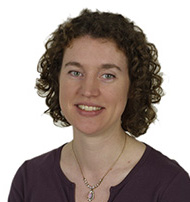Introducing Science in School Editorial article

In creating this journal, we are well aware of some apparent contradictions. Science is international, whereas science teaching is organised nationally or regionally. Most of today’s science is highly technical and detailed, yet teachers need to excite beginners. Science is moving very quickly, but it can take many years for new discoveries to work their way into the curriculum. Finally, more and more, the principal language of science is English, whereas the language of the classroom is usually the local language.
But whenever we put teachers from different subjects and countries in the same room, these contradictions fade away in the face of bigger, universal issues. Science is becoming increasingly international and interdisciplinary. Education systems may be national, but children across the world are curious about the same types of things. The most exciting development of the day may happen anywhere in the world or even in space: it may be a discovery on Mars or in the depths of the ocean, a medical breakthrough or a natural disaster. On such days it would be a shame not to put the textbooks aside, and to capitalise on the greatest natural resource in both science and school: curiosity.
For these reasons, Science in School addresses science teaching not only across Europe, but also across disciplines: highlighting the best in teaching and cutting-edge research, drawing on the overlap between subjects and the potential for interdisciplinary work. Furthermore, the discussion forum on our website will enable our readers to pose questions, offer solutions and discuss current topics – communicating directly across national and subject boundaries.
We could never have reached this stage without the support and hard work of the scientists, education experts and many teachers who were so enthusiastic about our proposed journal. The European research organisations that constitute EIROforum developed and realised the idea, which the European Union has generously agreed to support for the first four years within the framework of a larger science education project called NUCLEUS.
Of course, the support of the many teachers, scientists, journalists and others who sent us their articles was also crucial. A teacher may be keen to share a brilliant idea for teaching a new scientific topic or for presenting a worn-out theme in a new and engaging way. Or a scientist may be willing and able to explain a ground-breaking discovery. It is this communication – both among European teachers and between teachers, scientists and everyone else involved in European science teaching – that is key to Science in School.
Finally, we have some pleas for help. To achieve its purpose, Science in School needs to be read – by teachers, in museums, in ministries and by all those involved in European science teaching. If you can help us tell people about the journal – whether by email, via your website, by distributing flyers or even by sending out printed copies of the journal – please email us.
While we will make every effort to publish online in as many languages as possible, we need help! If you translate or adapt the articles, for example by creating versions of teaching materials that fit your curriculum, please send us your work so that we can make it available online to other teachers.
Very importantly, you can help by telling us what you think of our first issue. What do you like about it? What would you change? Which articles did you find particularly useful?
And lastly – please keep sending us your articles!
